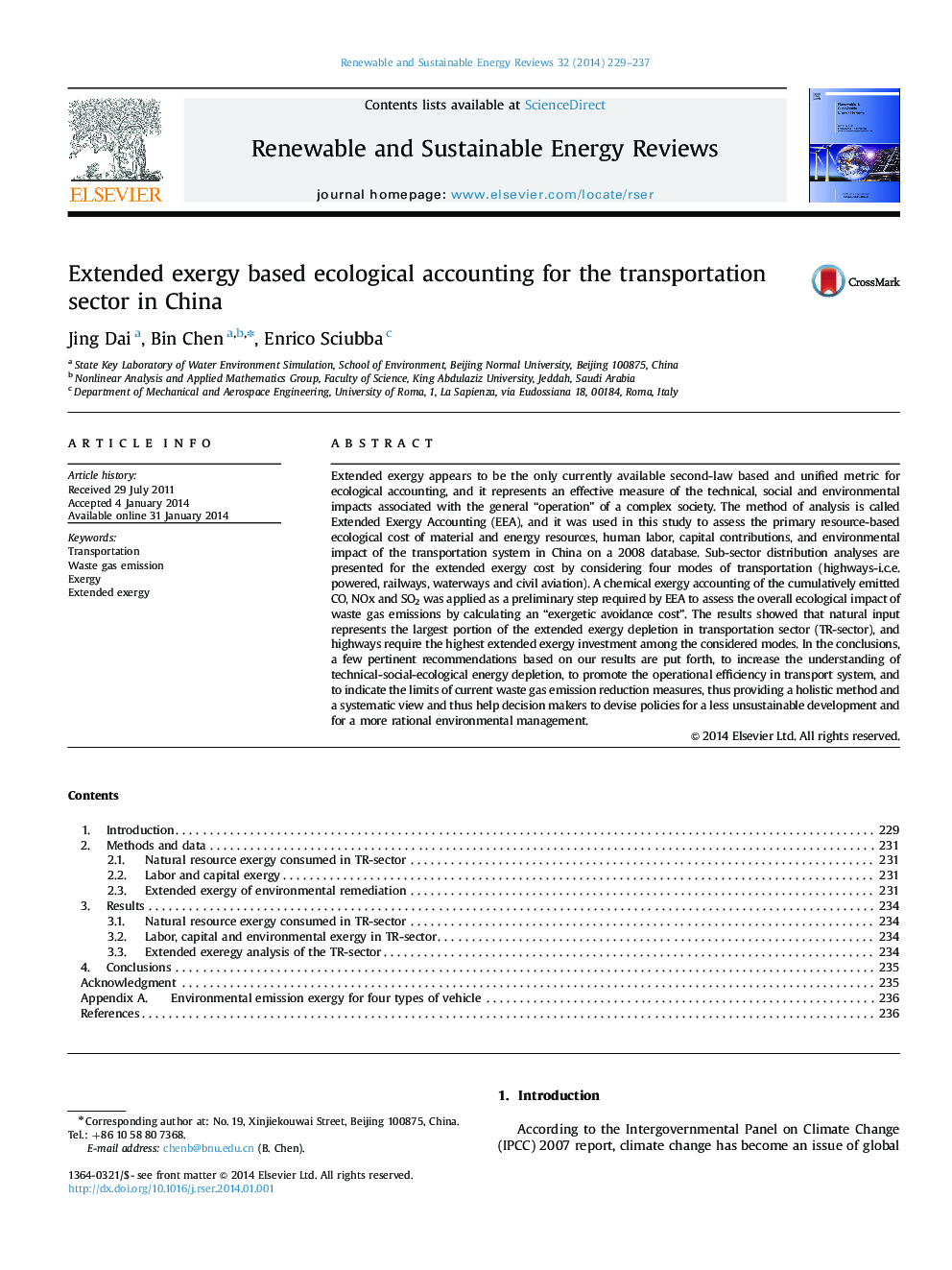| Article ID | Journal | Published Year | Pages | File Type |
|---|---|---|---|---|
| 8120067 | Renewable and Sustainable Energy Reviews | 2014 | 9 Pages |
Abstract
Extended exergy appears to be the only currently available second-law based and unified metric for ecological accounting, and it represents an effective measure of the technical, social and environmental impacts associated with the general “operation” of a complex society. The method of analysis is called Extended Exergy Accounting (EEA), and it was used in this study to assess the primary resource-based ecological cost of material and energy resources, human labor, capital contributions, and environmental impact of the transportation system in China on a 2008 database. Sub-sector distribution analyses are presented for the extended exergy cost by considering four modes of transportation (highways-i.c.e. powered, railways, waterways and civil aviation). A chemical exergy accounting of the cumulatively emitted CO, NOx and SO2 was applied as a preliminary step required by EEA to assess the overall ecological impact of waste gas emissions by calculating an “exergetic avoidance cost”. The results showed that natural input represents the largest portion of the extended exergy depletion in transportation sector (TR-sector), and highways require the highest extended exergy investment among the considered modes. In the conclusions, a few pertinent recommendations based on our results are put forth, to increase the understanding of technical-social-ecological energy depletion, to promote the operational efficiency in transport system, and to indicate the limits of current waste gas emission reduction measures, thus providing a holistic method and a systematic view and thus help decision makers to devise policies for a less unsustainable development and for a more rational environmental management.
Keywords
Related Topics
Physical Sciences and Engineering
Energy
Renewable Energy, Sustainability and the Environment
Authors
Jing Dai, Bin Chen, Enrico Sciubba,
